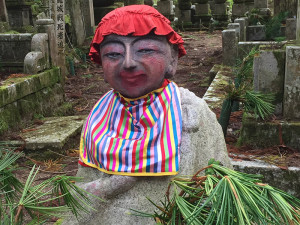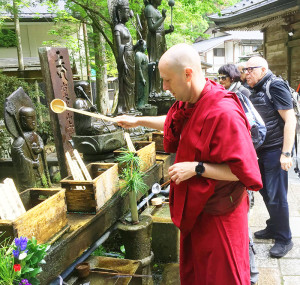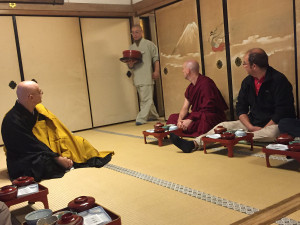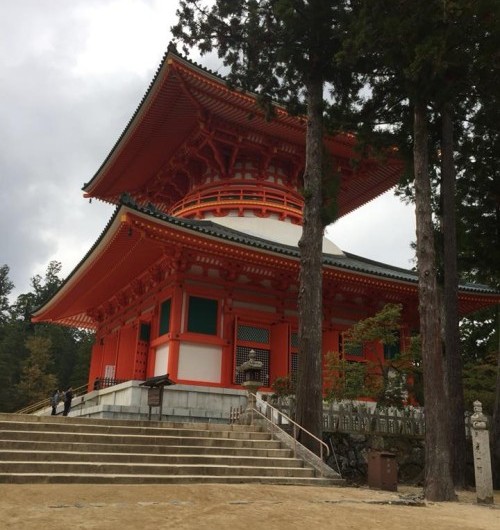 When you travel as much as I do, people often ask ‘where’s your favourite place?’ I used to stop and think for a moment. Now I don’t have to, I know and I have the instant answer Mt Koyasan. The most sacred place in Japan. It is simply stunning and is one of the main features of our Pilgrimage Paths to Japan.
When you travel as much as I do, people often ask ‘where’s your favourite place?’ I used to stop and think for a moment. Now I don’t have to, I know and I have the instant answer Mt Koyasan. The most sacred place in Japan. It is simply stunning and is one of the main features of our Pilgrimage Paths to Japan.
Mt Koya or Mt Koyasan as it is often referred to has been a sacred place that has welcomed pilgrims and visitors from all over the world for 1,200 years. It is small town made up of temples, shrines and pagodas and happens to be the birthplace and home of Shingon Buddhism, also known as Esoteric Buddhism. It is the largest religious centre for Buddhist study in Japan and has been a UNSECO World Heritage listed site since 2004.
There are many highlights of the town including the Kongobu-ji Temple which is the main temple of Mt Koyasan. It along with Konpon Daito Pagoda is another icon of the town. Standing at 49m it was constructed in 816AD and the structure is big orange in colour and can be seen at many vantage points throughout the town (pictured).
One of the other highlights for me including Okunoin, the cemetary on the edge of town which carries 200,000 gravestones and and immaculately cared for. There are centuries old cedar trees that line the path that runs through the centre of the cemetary and at night it is absolutely capitvating.

One of the monasteries run night cemetary tours of Okunoin and was one of the best parts of our Pilgrimage to Japan. The cemetary turned into a mystical and powerful place. The young monk who took the tour did a great job summarizing the difficult concept of Esoterism in such an understandable way. He chanted the sutra in front of the Mausoleum of the founder Kukai (Kobo Dashi) in such a smoothing and gifted voice. A highlight not to be missed.
Another highlight is staying in one of Mt Koya’s Buddhist temple inns – or Shukubo which provide lodging to pilgrims and travellers from the Edo era (around 1830’s). Back then there were 1,810 temples but this number has decreased today to 52 temples where you can stay. They also have an onsen to soak away your aches in the evening.
The Shukubo which we stay in had Japanese style rooms with tatami mat floors and shoji (paper screen doors).

Breakfast and dinner were included -vegetarian Buddhist monk cuisine and both were exquisitely presented. We also got to participate in the morning rituals which included a lot of chanting and praying for our departed ones. The whole experience was moving and authentic and loved how the main Buddhist monk had to keep looking at his little gadet to remember his lines in English. Certainly recommended for anyone who wanted an authentic Japanese experience.
The journey to and from Mt Koyasan is also a highlight. We came from Kyoto and took the train to Gokurakubashi station – on the Nankai line then a cable car at the end to the top of the mountain. On our way out we went by bus into the heart of Kii-Penisula to our next stop Yunomine Onsen where another adventure awaited us.
Venerable Kartson will be leading the next Pilgrimage Paths to Japan 1-11 December 2020 with an add on to Tokyo 11-14 December 2020

